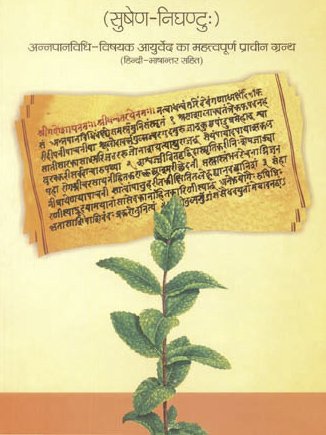Simhamukhi, Simha-mukhi, Siṃhamukhī: 3 definitions
Introduction:
Simhamukhi means something in Hinduism, Sanskrit, biology. If you want to know the exact meaning, history, etymology or English translation of this term then check out the descriptions on this page. Add your comment or reference to a book if you want to contribute to this summary article.
In Hinduism
Ayurveda (science of life)
Nighantu (Synonyms and Characteristics of Drugs and technical terms)
Source: WorldCat: Rāj nighaṇṭuSiṃhamukhī (सिंहमुखी) is another name for Vāsā, a medicinal plant identified with Adhatoda vasica Nees, synonym of Justicia adhatoda (“malabar nut”), from the Acanthaceae or acanthus family of flowering plants, according to verse 4.47-49 of the 13th-century Raj Nighantu or Rājanighaṇṭu. The fourth chapter (śatāhvādi-varga) of this book enumerates eighty varieties of small plants (pṛthu-kṣupa). Together with the names Siṃhamukhī and Vāsā, there are a total of sixteen Sanskrit synonyms identified for this plant.

Āyurveda (आयुर्वेद, ayurveda) is a branch of Indian science dealing with medicine, herbalism, taxology, anatomy, surgery, alchemy and related topics. Traditional practice of Āyurveda in ancient India dates back to at least the first millenium BC. Literature is commonly written in Sanskrit using various poetic metres.
Biology (plants and animals)
Source: Google Books: CRC World Dictionary (Regional names)Simhamukhi in India is the name of a plant defined with Justicia adhatoda in various botanical sources. This page contains potential references in Ayurveda, modern medicine, and other folk traditions or local practices It has the synonym Adhatoda adhatoda Huth (among others).
Example references for further research on medicinal uses or toxicity (see latin names for full list):
· Planta Medica (1990)
· Ethnobotany (2004)
· Plantae Asiaticae Rariores (Wallich) (1829)
· Glimpses of Cytogenetics in India (1992)
· CIS Chromosome Information Service (1976)
· Botanical Gazette (1974)
If you are looking for specific details regarding Simhamukhi, for example side effects, health benefits, diet and recipes, chemical composition, extract dosage, pregnancy safety, have a look at these references.

This sections includes definitions from the five kingdoms of living things: Animals, Plants, Fungi, Protists and Monera. It will include both the official binomial nomenclature (scientific names usually in Latin) as well as regional spellings and variants.
Languages of India and abroad
Sanskrit dictionary
Source: Cologne Digital Sanskrit Dictionaries: Monier-Williams Sanskrit-English Dictionary1) Siṃhamukhī (सिंहमुखी):—[=siṃha-mukhī] [from siṃha-mukha > siṃha] f. Glycine Debilis, [cf. Lexicographers, esp. such as amarasiṃha, halāyudha, hemacandra, etc.]
2) [v.s. ...] Gendarussa Vulgaris, [ib.]
Sanskrit, also spelled संस्कृतम् (saṃskṛtam), is an ancient language of India commonly seen as the grandmother of the Indo-European language family (even English!). Closely allied with Prakrit and Pali, Sanskrit is more exhaustive in both grammar and terms and has the most extensive collection of literature in the world, greatly surpassing its sister-languages Greek and Latin.
See also (Relevant definitions)
Relevant text
Search found 4 books and stories containing Simhamukhi, Simha-mukhi, Siṃhamukhī, Siṃha-mukhī; (plurals include: Simhamukhis, mukhis, Siṃhamukhīs, mukhīs). You can also click to the full overview containing English textual excerpts. Below are direct links for the most relevant articles:
Guhyagarbha Tantra (with Commentary) (by Gyurme Dorje)
Text 15.26 (Commentary) < [Chapter 15 (Text and Commentary)]
Text 16.3 (Commentary) < [Chapter 16 (Text and Commentary)]
Text 20.19 (Commentary) < [Chapter 20 (Text And Commentary)]
The Skanda Purana (by G. V. Tagare)
Chapter 45 - The Arrival of Sixty-four Yoginīs < [Section 1 - Pūrvārdha]
Blue Annals (deb-ther sngon-po) (by George N. Roerich)
Chapter 17a - Gotshangpa together with his great sons < [Book 8 - The famous Dakpo Kagyü (traditions)]
Amarakoshodghatana of Kshirasvamin (study) (by A. Yamuna Devi)